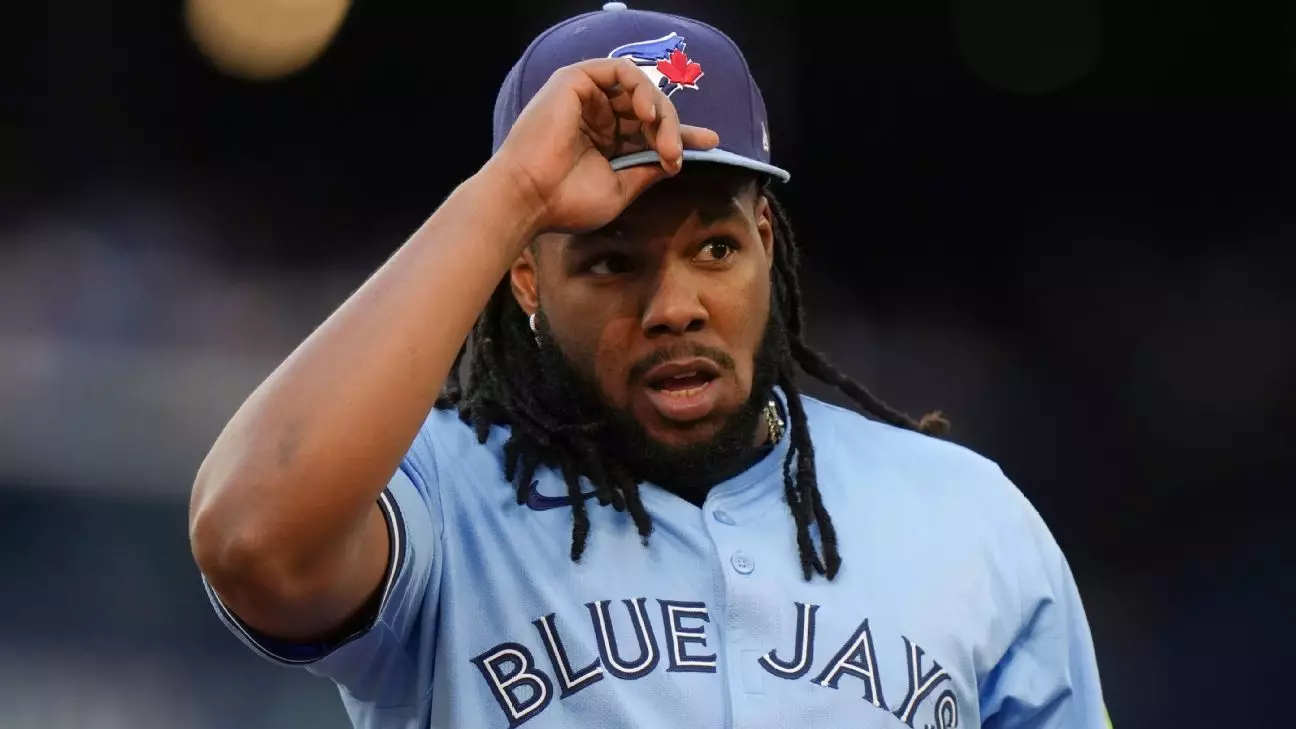Major League Baseball’s arbitration process serves as a pivotal juncture in player management and salary negotiations, influencing team rosters and financial strategies. The recent developments surrounding some of the league’s standout players highlight not only the intricacies of contracts but also the burgeoning influence of players in shaping their financial destinies. As teams attempt to balance their payrolls against performance and market trends, the stakes continue to rise.
One of the most eye-catching agreements this season came from Toronto Blue Jays first baseman Vladimir Guerrero Jr., who secured a staggering $28.5 million for one year. This agreement follows a year in which he previously set a record during arbitration talks, ultimately landing a salary of $19.9 million. For Guerrero Jr., who has already established himself as a significant force in the league and is the son of Hall of Famer Vladimir Guerrero, this contract exemplifies both his on-field prowess and the market’s ever-growing value for elite talent.
Similarly, Houston Astros pitcher Framber Valdez, a key figure in their pitching rotation, also navigated this arbitration cycle effectively, sealing an $18 million deal. Valdez’s ability to command such a figure underlines the competitive landscape of MLB pitchers. As he and Guerrero Jr. aim for free agency after the World Series, the pressure mounts to perform at an elite level.
Comparable narratives exist for players like Tarik Skubal of the Detroit Tigers, who, after winning the American League Cy Young Award, achieved a notable salary increase to $10.15 million—more than triple the previous season’s earnings. These examples highlight a pivotal trend: successful players are leveraging their on-field accomplishments to forge lucrative contracts, underscoring the financial power shifting toward the athletes themselves.
The arbitration process is notorious for its drama-covered negotiations and the irregularities that arise as teams and players jockey for financial position. In recent years, players have started to gain a favorable edge in these hearings. Analyzing last winter’s arbitration hearings, players came out ahead with a record of 9-6, which was a noteworthy recovery compared to the team-led victories observed in previous years. Since the inception of the arbitration framework in 1974, teams had significantly outperformed players, but the tides are beginning to shift.
This newfound momentum for players can partly be attributed to their increasing understanding of their market value and an expanded array of representation options. Consequently, the 155 players eligible for arbitration this year saw many of them reach satisfactory agreements ahead of scheduled hearings, indicating a potentially more collaborative atmosphere. Notably, Daulton Varsho and Alejandro Kirk from the Blue Jays also reached agreements, with Varsho commanding $8.2 million and Kirk at $4.6 million, further emphasizing the framework that teams and players are navigating together.
The evolving landscape of MLB arbitration is not without complications. As teams strategize around fiscal constraints and performance metrics, the high-stakes nature of these negotiations is likely to impact roster moves across the league. With the upcoming free-agency cycle looming for stars like Guerrero and Valdez, the decisions made now will resonate far beyond this season, shaping franchise directions and player legacies.
The ongoing transitions within MLB highlight critical lessons concerning player agency, financial independence, and market dynamics. The emergence of large contracts—such as Juan Soto’s historic deal with the New York Mets—sets a new standard for future arbitration negotiations, shifting expectations for what top-tier talent should command. Meanwhile, the uncertainty around scheduled hearings for players like Kyle Tucker and Jarren Duran introduces an element of unpredictability that can shape the narrative for each franchise.
The recent arbitration season has not only revealed the individual successes of players but has also pointed toward a larger shift in the financial framework of Major League Baseball. With players leveraging their performance effectively, the landscape stands poised for transformative changes in how contracts are negotiated and the significance of player autonomy in the industry.


Leave a Reply